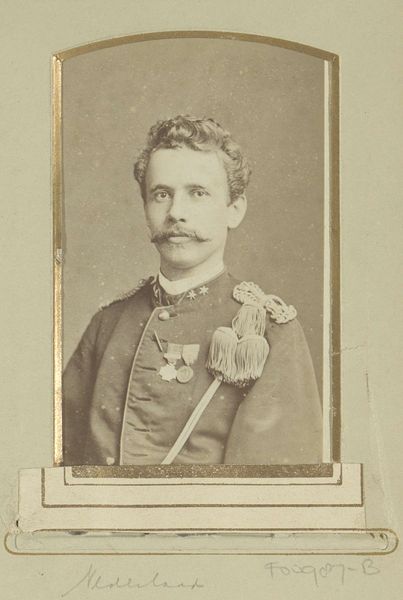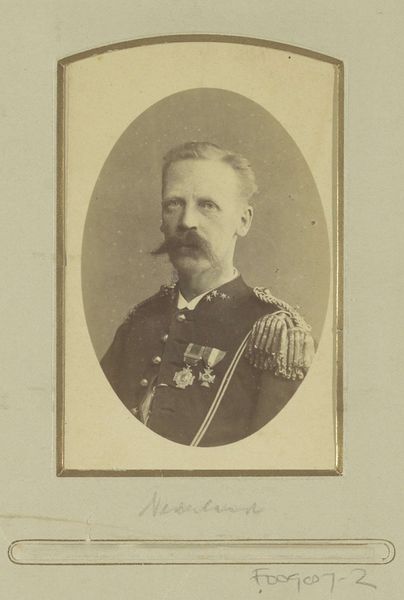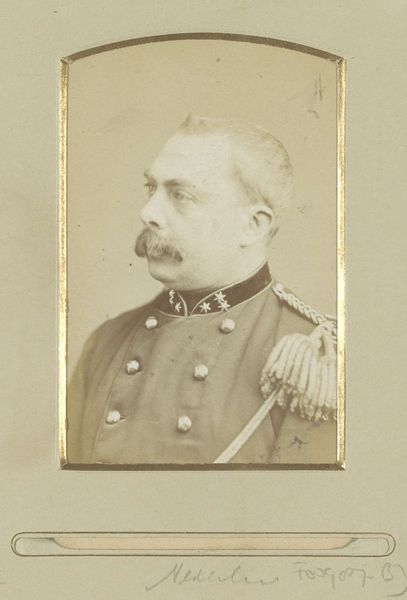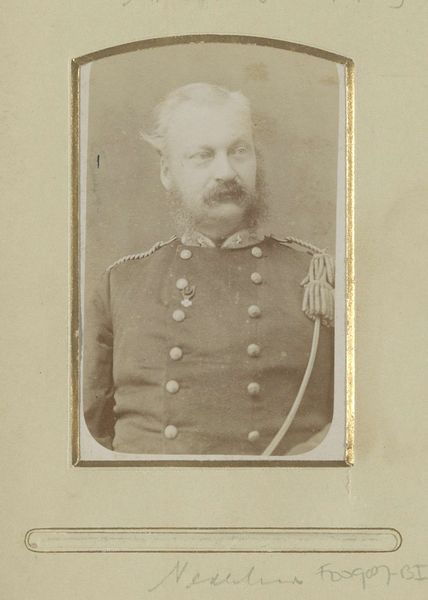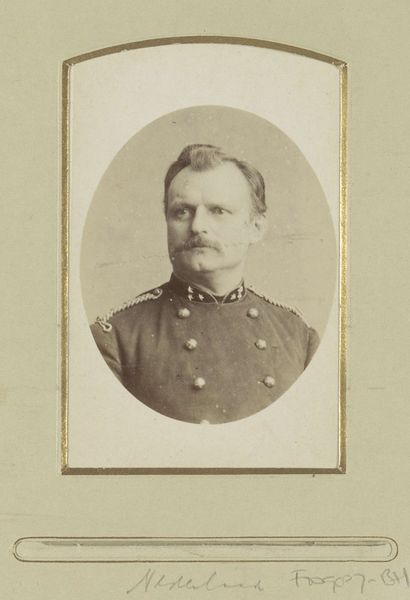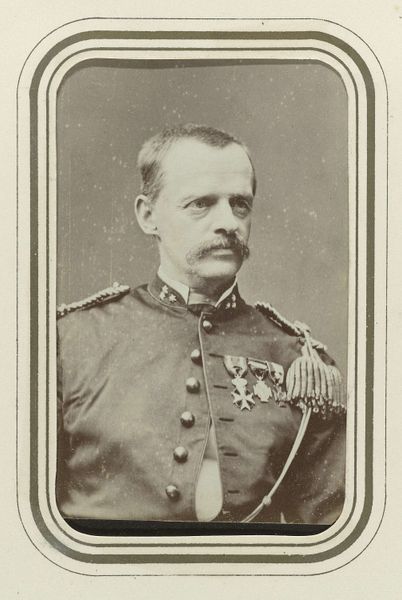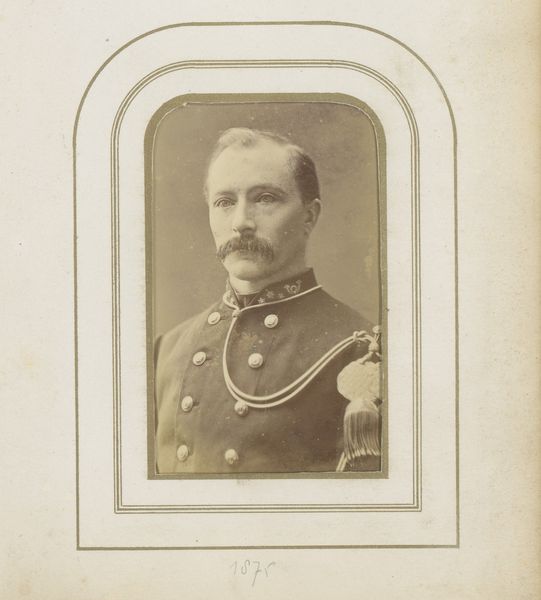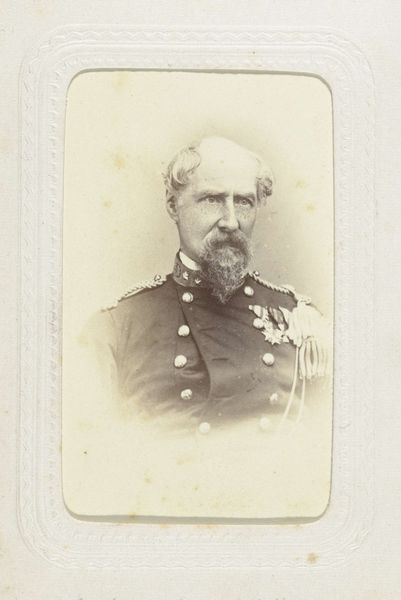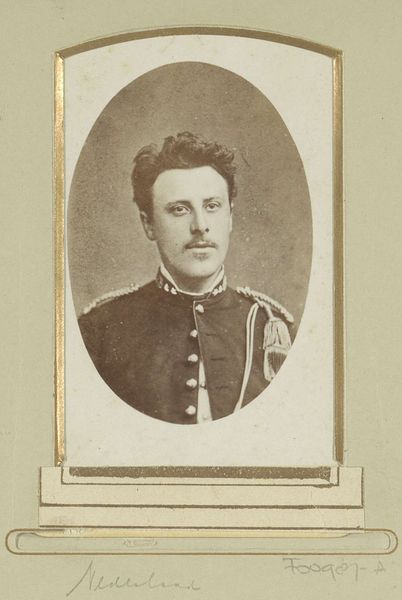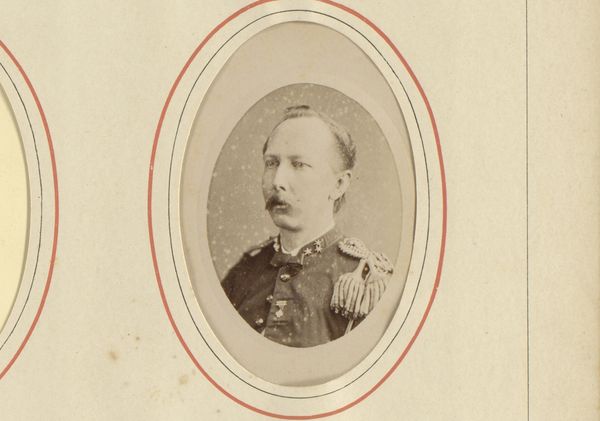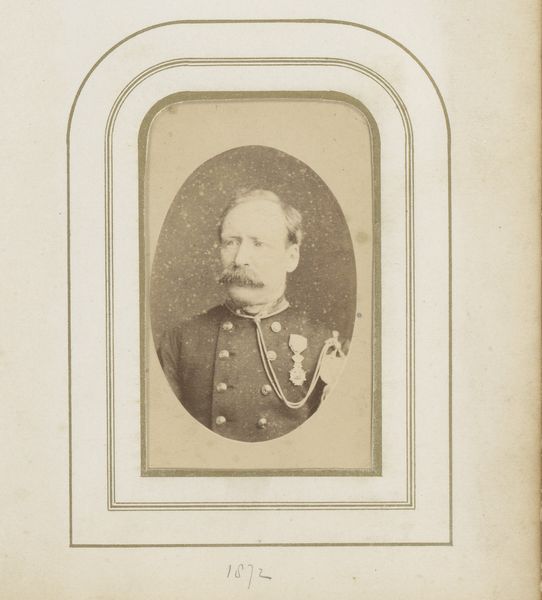
Portret van een (vermoedelijk) Nederlandse militair after 1873
0:00
0:00
friedrichjuliusvonkolkow
Rijksmuseum
photography, albumen-print
#
photography
#
albumen-print
#
realism
Dimensions: height 105 mm, width 64 mm
Copyright: Rijks Museum: Open Domain
Curator: Looking at "Portret van een (vermoedelijk) Nederlandse militair" or "Portrait of a (Presumed) Dutch Soldier", an albumen print from after 1873 by Friedrich Julius von Kolkow, housed here at the Rijksmuseum. I am immediately struck by the somber mood despite the rigid posture; there's something quite vulnerable in the man's eyes. Editor: The process itself, the albumen print, is significant. Each print required meticulously prepared paper coated with egg whites and sensitized to light. We're seeing a level of artisanal skill rarely applied to photographic portraiture at this scale now. Curator: Indeed, thinking of the production, these types of portraits offered newly accessible visual representation to a broader middle class— though undoubtedly still inaccessible to many. Photography becomes less about artistic mastery and more about documentation, or the semblance thereof. It challenges the class dynamics inherent to commissioned portraiture. Editor: Precisely. Consider the material reality: an officer's uniform, carefully tailored; its embellishments like those shoulder tassels and their braiding, the meticulously waxed mustache—they convey status and power. Think of the labor involved in each thread, each stitch and their origins in colonial exploits for textiles. Curator: I'd also note that, beyond mere representation, the military uniform evokes very particular responses: patriotism, obedience, perhaps even anxiety around the projection of national identity and power. Does it challenge established narratives of Dutch national identity at the time, or reify them? Editor: The uniform is an interesting example. But how does this work speak to evolving masculinity during a period marked by intense social and political change? Curator: By the rigidity it embodies! Male identity so carefully constructed with this impeccable uniform, stiff collar. It invites us to consider what's concealed beneath this carefully crafted image of control, strength, order. I believe this piece allows us a peek beneath its polished surface, hinting at an unease of vulnerability. Editor: These visual fragments provide essential links to historical class dynamics and manufacturing processes. And, what does that offer to today’s makers and activists? Curator: It underscores how our perception of something simple as portrait is profoundly intertwined with culture. Thank you for unpacking all this; the photograph prompts me to consider these figures and production in an entirely different context. Editor: My pleasure, these types of projects require looking beyond the photograph’s subjects and really focusing on who touched it.
Comments
No comments
Be the first to comment and join the conversation on the ultimate creative platform.
